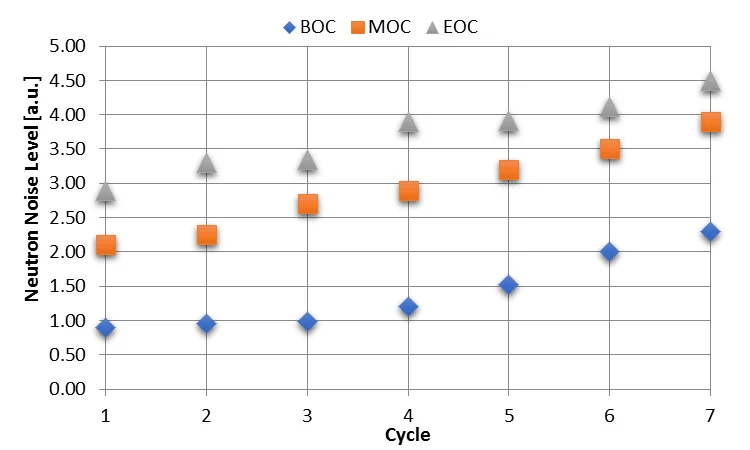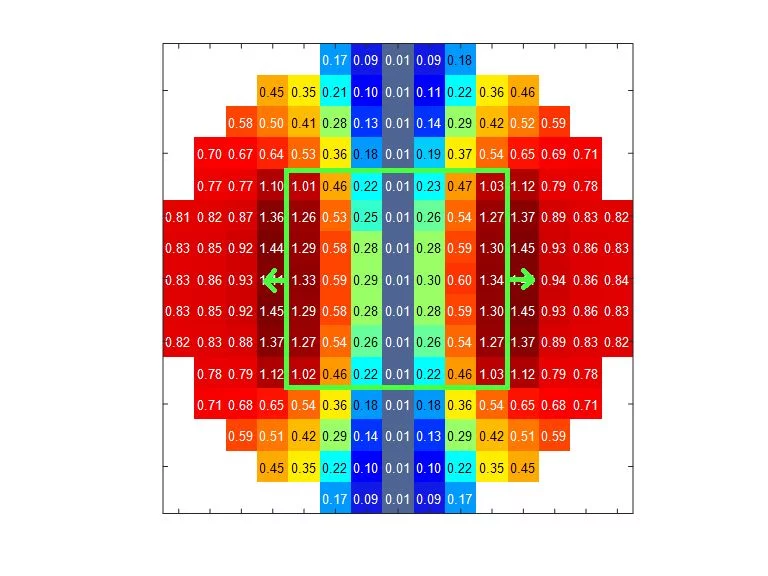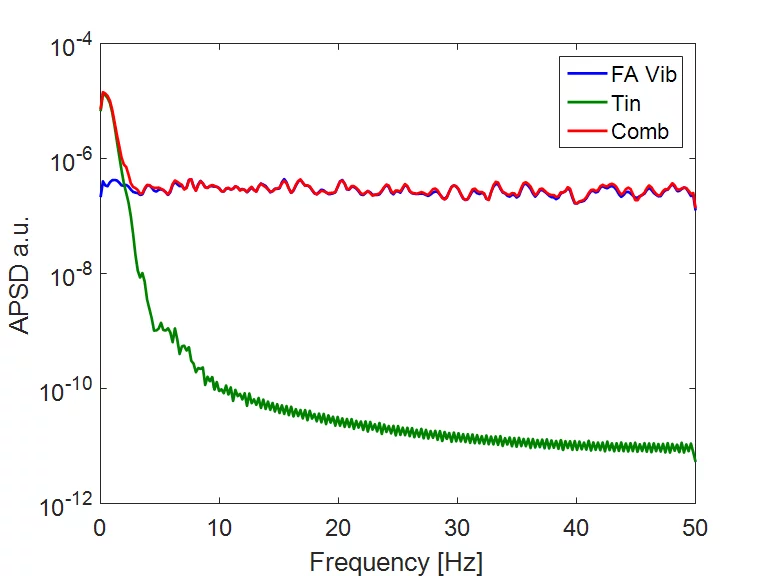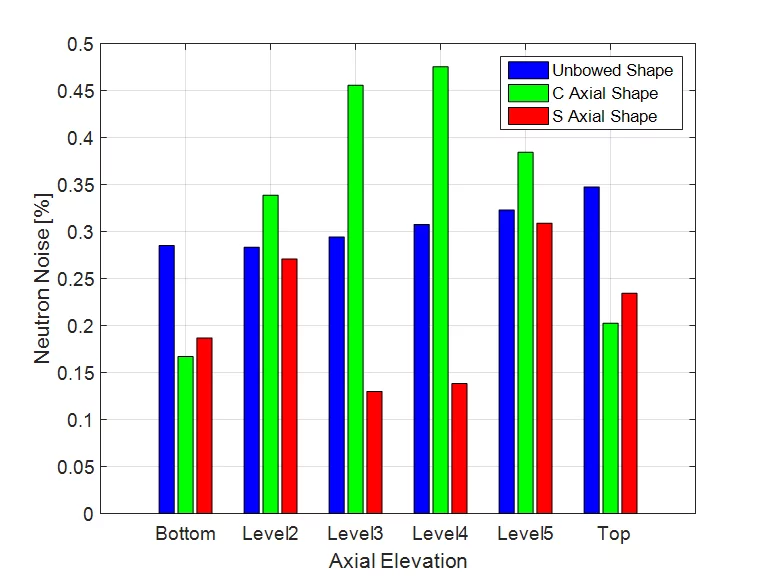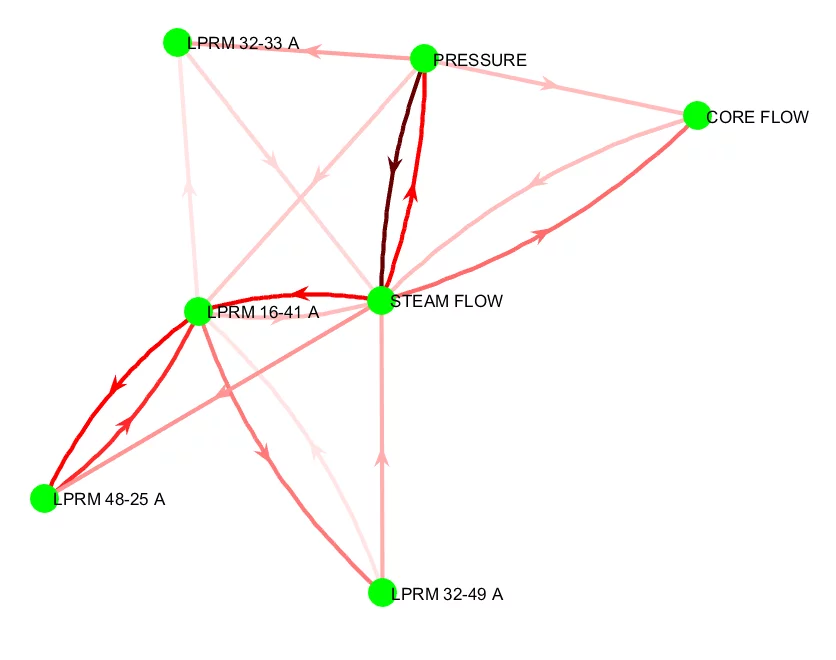A nuclear reactor is a complex system which is characterized by strong stochastic behaviour. This can be easily understood by observing the time-dependent evolution of the reactor power which is stochastically fluctuating over its mean value, even at steady-state conditions. This behaviour, which is commonly referred as neutron noise, is an inherent characteristic of any operating nuclear reactor. The reactor power is continuously monitored by several neutron detectors which are distributed throughout the core. Therefore, the fluctuation of reactor power over its mean value (neutron noise) can be continuously measured with high accuracy. By evaluating the neutron noise in both the time and frequency domain over the lifespan of a nuclear reactor, it is possible to identify the characteristic signatures of the analysed core, to monitor its behaviour, and more importantly to early detect anomalies that might occur during the reactor’s operation. Neutron noise has been systematically studied for many decades, however, recently, it has gained increasing attention following an unexplained behaviour of neutron noise level in a specific type of European reactors, in which the level show an increasing trend between many successive cycles (Figure 1). This neutron noise increasing trend is certainly not a safety related issue but it can create costly operational problems. The cause and the underlying physics behind this phenomenon are not yet well understood and many hypotheses are under investigation. Therefore, a dedicated LRT/STARS PhD thesis is focusing on using novel signal analysis methods for data mining of reactor noise measurements and on developing and validating advanced numerical models for reactor noise simulations. In this context, the main hypotheses concerning the root-cause of the neutron noise increasing trend are analysed and assessed in an innovative and systematic manner.
In order to understand the reasons behind the neutron noise level increase, advanced in-house simulation models have been used. Based on the literature and the experience gained from reactor operation, the main hypotheses behind the neutron noise increasing trend are related to the propagation of various stochastic fluctuations/perturbations within the core, comprising fuel assembly lateral oscillations, inlet coolant temperature and flow fluctuations, etc. Therefore, for the first time a systematic analysis of the impact of these stochastic perturbations on the neutron noise behaviour has been carried out. Results show that the utilized simulation tools can properly predict the neutron noise spatial shape when fuel assemblies are randomly vibrating. For example, Figure 2 presents the noise behaviour when the 7x7 central fuel assemblies are randomly vibrating in the x-direction. In this case, the neutron noise has a symmetric shape based on the direction of vibration, and additionally the highest noise levels can be found at the boarder of the vibrating fuel assemblies’ group, as expected. Moreover, by simulating realistic scenarios, it was found that the neutron noise response due to fuel assembly lateral oscillations and coolant inlet temperature fluctuations has similar qualitative behaviour compared to the measured plant data (Figure 3). Furthermore, the neutron noise response was found to linearly depend on both the number of vibrating fuel assemblies and the magnitude of the vibration amplitude. Finally, oscillating bowed fuel assemblies show a clear impact on both the neutron noise level and its axial distribution, as it is presented in Figure 4.
The beauty of nuclear reactor physics relies on utilizing concepts and ideas from diverse scientific areas for understanding deeper and more comprehensively its complex behaviour. Considering the “chicken-and-egg” dilemma, nuclear reactor plant data represent processes that are highly inter-related, and at the same time it is usually very challenging to determine the cause-and-effect relationship between signals of different physical nature but which nevertheless contain very similar noise fluctuations. Advanced methods for multi-variate noise analysis are needed, and one of such is the so called causality analysis technique. This is a signal processing methodology used to estimate the connectivity patterns between signals and on this basis indicate the source of any system’s disturbance as well as how it propagates among the system components. Originally, causality analysis methods were developed in the area of econometrics. However, over the years, these techniques have been considerably enhanced in order to analyse the structural behaviour of the human brain by estimating how neurons exchange information and are interconnected between each other. Within the framework of the on-going LRT/STARS PhD thesis, a first attempt to adapt and apply such methods for reactor signal analyses has been made. More specifically, by drawing an analogy between a nuclear reactor core and a human brain, the interactions between various core signals (e.g. neutron detectors, pressure, flow, temperature, etc.) are estimated from causality analyses, leading to the determination of connectivity patterns and providing eventually also indications of abnormalities. This technique has thus been implemented for both PWRs and BWRs and has already shown it’s ability to give deeper insights on the interconnections between different components of the analysed system. As an example, this technique was recently applied to strengthen the hypothesis regarding the source of observed core/plant process dynamical interactions which are taking place during the normal start-up phase of certain BWR plants. In this context, Figure 5 presents how in-core neutron detectors and key process signals (e.g. core flow, core pressure, and steam flow) are interconnected once turbine synchronization is initiated during the power ascension phase. The causality analysis indicates here a central role of the steam flow signal during these specific operating conditions as it can be seen to be directly affecting not only the behaviour of almost all the neutron detectors but also guide the strong interconnection with the core pressure. At the same time, the core flow signal is completely decoupled from the neutron detector signals.
Contact
Dr. Alexander Vasiliev
Steady-State, Transient and Radiation Safety Analyses - System Group (STARS)
Laboratory for Reactor Physics and Thermal-Hydraulics (LRT)
Nuclear Energy and Safety Research Division (NES)
Paul Scherrer Institut
Original Publications
SIMULATE-3K Analyses of Neutron Noise Response to Fuel Assembly Vibrations and Thermal-Hydraulics Parameters Fluctuations
D. Chionis, A. Dokhane, L. Belblidia, M. Pecchia, G. Girardin, H. Ferroukhi, and A. Pautz
M&C 2017 Conference, Jeju, South Korea
On Causality Analysis of Nuclear Reactor Noise using Partial Directed Coherence
D. Chionis, A. Dokhane, H. Ferroukhi, and A. Pautz
ANS PHYSOR 2016 Conference, Sun Valley, ID, USA


